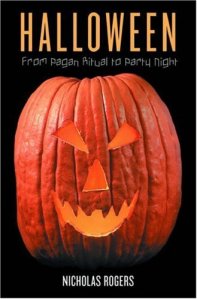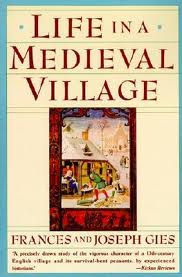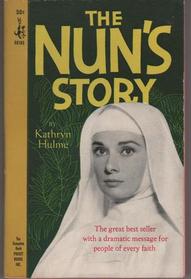It’s that time again, so let’s take a look back at the last year in reading and see how my basic impressions stack up. Click on the book title to go to the full review, where I’ve written one.
1. British History for Dummies, finished Jan 4th. These books are always well-done and succeed in their intended purpose. The difficulty is that no matter how much you try to dumb it down, it still ends up being way too long.
2. Delusions of Gender: How Our Minds, Society, and Neurosexism Create Difference, finished Jan 14th. This book was fascinating and well worth the read.
3. Doctors From Hell: The Horrific Account of Nazi Experiments on Humans, finished Jan 22nd. An important bart of the world’s past that I feel it’s important to know.
4. A Strange Stirring: The Feminine Mystique and American Women at the Dawn of the 1960s, finished Jan 28th. Not a waste of time, but those who are not incredibly interested in the history of feminism may find it boring.
5. Freedom Summer: The Savage Season That Made Mississippi Burn And Made America a Democracy, finished March 2nd. Damn, I sure read books with long titles. This book is important. Read it.
6. Madame Du Barry: The Wages of Beauty, finished March 14th. Surprisingly boring.
7. Hedy’s Folly: The Life and Breakthrough Inventions of Hedy Lamarr, the Most Beautiful Woman in the World, finished March 16th. The content is fascinating, but the scientific descriptions were right over my head, and I got bored.
8. Push, finished March 17th. Very good, just like the movie.
9. Black Cargoes: A History of the Atlantic Slave Trade, 1518-1865, finished March 26th. Very interesting content, but the writing could have been less dry.
10. The Night the Defeos Died, Reinvestigating the Amityville Murders, finished March 31st. Hands down my favorite book of the year. Awesome.
11. Knocked Up: Confessions of a Hip Mother-To-Be, finished April 4th. This is just fluffy entertainment. Nothing that great or valuable here.
12. Twelve Years a Slave, finished April 13th. Very personal and moving.
13. High Society: The Life of Grace Kelly, finished April 21st. Totally boring.
14. The Lives of the Kings and Queens of England, finished May 5th. Antonia Fraser is always a delight, but this book may be more suited to have around just as reference, or it can get very long.
15. The God Virus: How Religion Infects Our Lives and Culture, finished May 8th. As I try to think of something to say here, it occurs to me that this book was forgettable. But I do remember liking it.
16. The Bedwetter: Stories of Courage, Redemption, and Pee, finished May 10th. Maybe it’s just the authors I’m choosing, but I find comedy books to be more valuable than people probably give them credit for.
17. In Cold Blood, finished May 16th. Awesome. There’s a reason this book is a classic.
18. The Last Gasp: The Rise and Fall of the American Gas Chamber, finished May 20th. Dark books are my weakness, but this was without any flavor at all.
19. African American History for Dummies, finished June 13th. Even though the For Dummies books are by different authors, my impressions of them are always the same.
20. Haunted: The Incredible True Story of a Canadian Family’s Experience Living in a Haunted House, finished June 17th. Mildly interesting, but not the least bit scary. Poop.
21. Survival of the Prettiest: The Science of Beauty, finished July 12th. Very interesting, very much worth the read.
22. Lord High Executioner: An Unashamed Look at Hangmen, Headsmen, and Their Kind, finished July 22nd. A surprisingly light read for such a dark subject.
23. Whipping Girl: A Transsexual Woman on Sexism and the Scapegoating of Femininity, finished August 29th. A valuable read for every kind of woman.
24. Mad in America: Bad Science, Bad Medicine, and the Enduring Mistreatment of the Mentally Ill, finished Sept 8th. Horrifying.
25. Sasquatch: North America’s Enduring Mystery, finished Sept 12th. A very complete explanation, but still a little meh
26. The Emperor of All Maladies: A Biography of Cancer, finished Sept 22nd. Both depressing and uplifting at the same time, and all around very impressive.
27. Dead Until Dark, finished Sept 23rd. Surprisingly fluffy and weak, considering such a great show came out of it.
28. The Tin Ticket: The Heroic Journey of Australia’s Convict Women, finished Oct 6th. Pretty interesting, very engaging novel-like style.
29. Wicked River: The Mississippi When it Last Ran Wild, finished Oct 16th. Well-written, and cool information, but arguably with limited importance. That sounds bad…
30. Vittorio, The Vampire, finished Oct 24th. It’s an Anne Rice book, enough said.
31. Living Dead in Dallas, finished Nov 16th. More fun and interesting than Dead Until Dark, but still fluff.
32. Prince Lestat, finished Dec 5th. Well worth the wait.
33. Manson: The Life and Times of Charles Manson, finished Dec 27th. Perfection.



